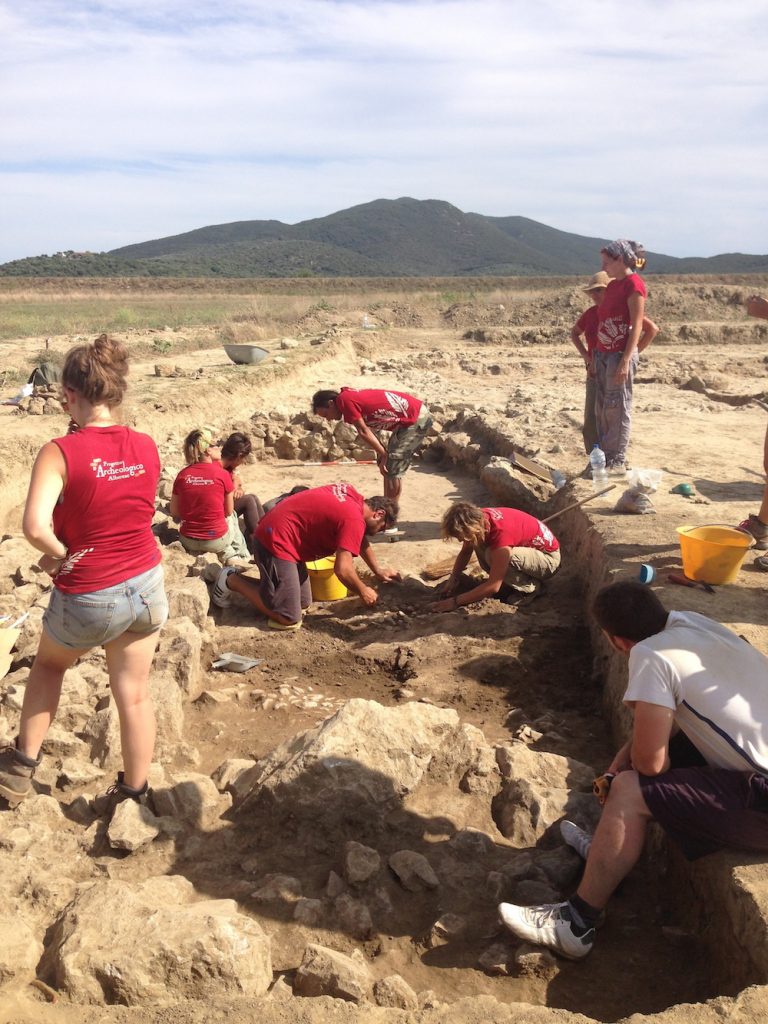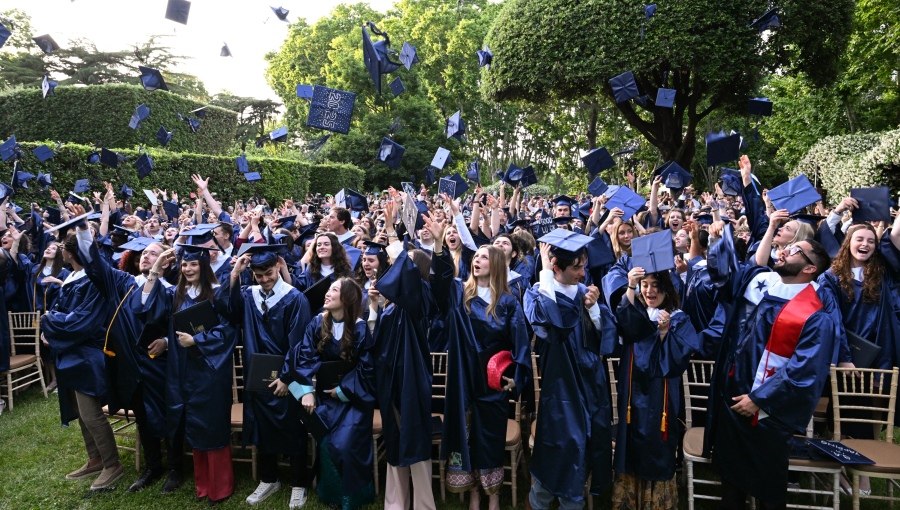JCU Visits Alberese Archaeological Field School in Tuscany
On Sunday August 3rd, the Alberese Archaeological Project invited the John Cabot University community to go on site. Staff, faculty and students visited excavations in progress, and explored the world of archaeology. They had an opportunity to see the practical and academic processes, and to actually touch the discoveries of this JCU affiliated research project.
It was an incredible day: engaging, interesting, with world-class academia, and a community that values and cultivates knowledge.
Investigating Roman Etruria (Tuscany)
In Grosseto, the group visited the special exhibition on the Alberese Archaeological Project: I Romani di Alberese (The Romans of Alberese). The exhibition showcases the innovative results and rich finds of the excavations.
On-site, the inspiring lectures by the Project directors led the group through the three different sites that compose the investigations of Roman Etruria: a river port and workshop, a villa and a temple sanctuary.
Overall, this is the setting for the students taking part in the Field School excavations.
An innovative approach
The site at Spolverino, between the Aurelia vetus road and the Ombrone River, was a Roman cabotage port with a large workshop complex making use of recycling. This discovery changes our understanding of the Roman economy and trade.
As well as producing objects in bone, metals and glass, they imported objects from the surrounding areas and recycled them, making new and finished objects that could then be exported and sold.
This recycling responded to the market’s necessities, being always modern and a resource for their society. What is so incredibly exciting is to find how recycling has its roots deep in the past, and how contemporary the dynamics of the facility are.
An international world
The presence of coins from different parts of the Roman Empire, amphorae from Spain and Africa, and the presence of Egyptian blue pigment indicates that trade occurred on a large scale and with an international market.
The current excavations, close to the port site, may be a Roman villa. The excavations were only started this year, and the building’s use is intriguingly uncertain. Is it a villa farm (pas rustica), a market place, or a mansio (staging post)?
The temple sanctuary at Scoglietto (dedicated to Diana Umbronensis) was located at the mouth of the river and hence acted as a marker for Mediterranean travel. Together the three sites help us understand the interactions and the financial exchanges over time and between areas, between the 3rd century BC and the 6th AD.
A shared experience
The research project as a whole emphasizes dialogue and the exchange of expertise between researchers, specialists and professors. This is an extremely contemporary approach to the field and fits perfectly with the international character of JCU.
The day and the project can be summarized with the words learning, leadership and community (eruditio, ductus, societas). Professor Inge Hansen closed the day with words that exemplify the cooperative professionalism of the project: “Thank you for taking part in this dialogue.”
A special thanks goes to the President’s Office of John Cabot University, the entire JCU community, and the Directors of the Alberese Archeological Project for making this possible.
*JCU student Gabriele Cotronei is a Humanistic Studies major
Learn more about the Alberese Archaeological Project.






